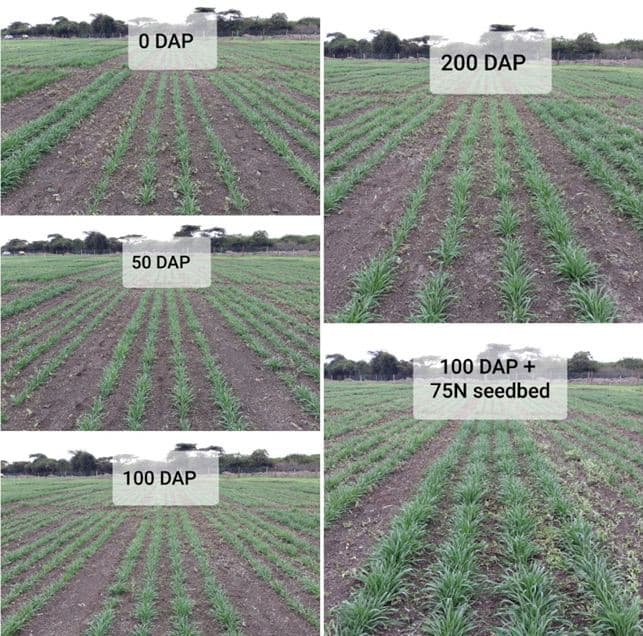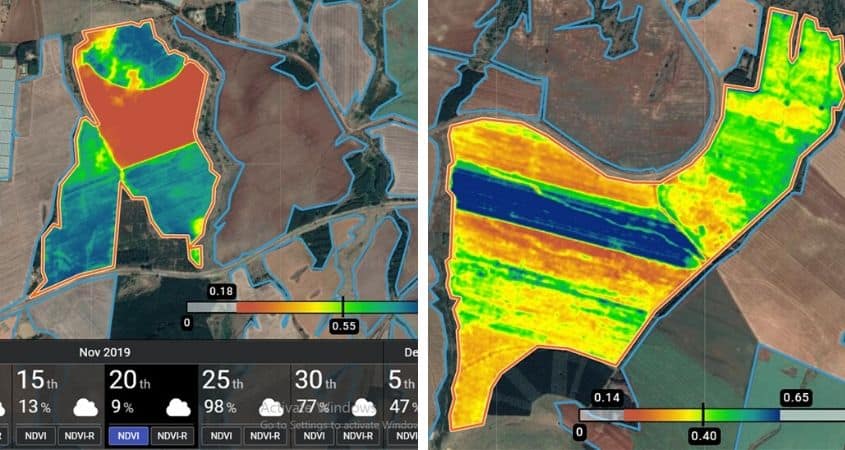
Think Agronomy is our new, regular broadcast keeping arable farmers updated with tips, tricks and knowledge from our experienced team of independent agronomists. To subscribe to receive our Agronomy newsletters straight to your email inbox, please click here
Farmers of every crop type including livestock are being urgent to make plans to deal with the potential locust plague that spread from Somalia across Wajir, and has already devoured tens of thousands of acres around Marsabit.
Co-ordinated approach or not, there are steps individual farmers can take to reduce the risk to their own crops, including having the right insecticides in store ready to apply BEFORE the pests hits. Some products have a persistence of up to a week even at Ultra Low Volume, so given the speed that the swarms have moved already, it would be wise to be pre-empting their arrival at any time.

A spray application over as much of the shamba as is practically possible, either with a tractor sprayer or an aeroplane, will buy valuable time, and better to be a week early than a day late. Contact our crop consulting team for specific independent advice on products, rates and application techniques.
Whilst many soils in Kenya tend to be very low in Phosphate, most farms have a field or two which have higher P levels, perhaps from historical livestock bomas or different soil types. Carrying out a soil test allows you to identify these areas and potentially make savings in fertilizer costs without sacrificing yields.
One such client last year moved from a flat rate of 125kg/ha DAP, to an average of 91kg/ha DAP and some 23.23.0 by adjusting planting fertilizer rates according to P levels. This reduced the seedbed fertilizer cost from 6,875 Ksh per hectare to 5,005 Ksh, leading to savings of 1,870 Ksh per hectare.
The majority of fields on the farm had P levels around 5ppm, however several fields were found with well over 30ppm, and in one case 75ppm of P.

Our seedbed fertilizer trials in the area on similar soil types – looking at responses to different rates of P – have been conducted on a range of sites with P levels ranging from 5 to 30ppm, giving the confidence to reduce rates gradually when soil levels reach 30 ppm, and to cut rates down to just 20kg/ha of phosphate in many high P situations.
It is crucial not under fertilize in the name of cost saving, however having a network of trials and experience from our Agronomy Client’s farms, we have the confidence to identify the situations where savings can be made without detriment to yield.
The foundation for this is a good, accurate soil test that represents the true picture within the field, remembering that areas of which have a different soil type or history should be sampled separately.

Blight pressure has been extremely high during the recent wet weather, and keeping on top of the disease is a must to avoid yield loss and problems in store.
Keeping the spray interval close is crucial – 4-5 days max between blight fungicides in order to protect new growth when there are disease lesions actively sporulating in the crop. This can require 10-12 fungicides in some crops, and many growers question what product to use once they have been through their tried and trusted fungicides. But fear not…

The labels of Revus (mandipropamid), Orvego (ametoctradin + dimethomorph) and the eagerly awaited Zorvec all permit three consecutive applications, and are different modes of action. This immediately gets you nine consecutive treatments!
Add in propamocarb products (e.g. Infinito) which in most countries has a limit of four applications but no maximum consecutive number and you can see that season-long protection can at least be kept simple.
Benthiavalicarb is now approved in Kenya too which is excellent news, however this is from the same group as Orvego so should NOT be used consecutively, for resistance management.
Remember too that multi-site inhibitors such as mancozeb play a major part in resistance management, and are in fact a label requirement in products such as manipropamid many countries. Cymoxanil also gives some curative activity in high pressure situations and is fairly inexpensive.
Towards the end of the program fluazinam still works very well on tuber blight, and fluazinam-insensitive blight strains – first identified in 2017 – actually declined in Europe this year.
And finally, reduce blight pressure by controlling volunteer potatoes. We have been busy spraying and uprooting volunteers around our trials this week to avoid them spreading blight spores to nearby crops.

Farming for the future requires a change of approach. Monoculture, soil degradation and climate change and soil degradation are threats to the future of how we feed the planet. Agventure Ltd set up the Center of Excellence for Crop Rotation to help farmers diversify cropping systems and introduce techniques which have a long-term outlook to improve soil health. The Center of Excellence for Crop Rotation works extensively with Crop Nutrition Laboratory Services Ltd (Cropnuts).

David Jones is the Broad Acre Specialist at Crop Nutrition Laboratory Services Ltd. (CROPNUTS). David has a keen interest in soils and no till farming systems where he has undertaken work looking into weed levels and changes in soil structure, and has extensive experience in field trials and in the development of precision farming techniques. In his spare time he enjoys playing rugby.
Order our services and get to know how to improve your soil for better yeilds.